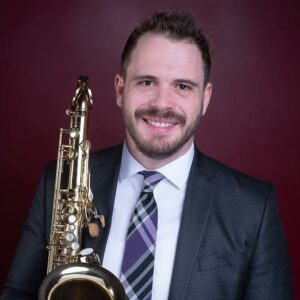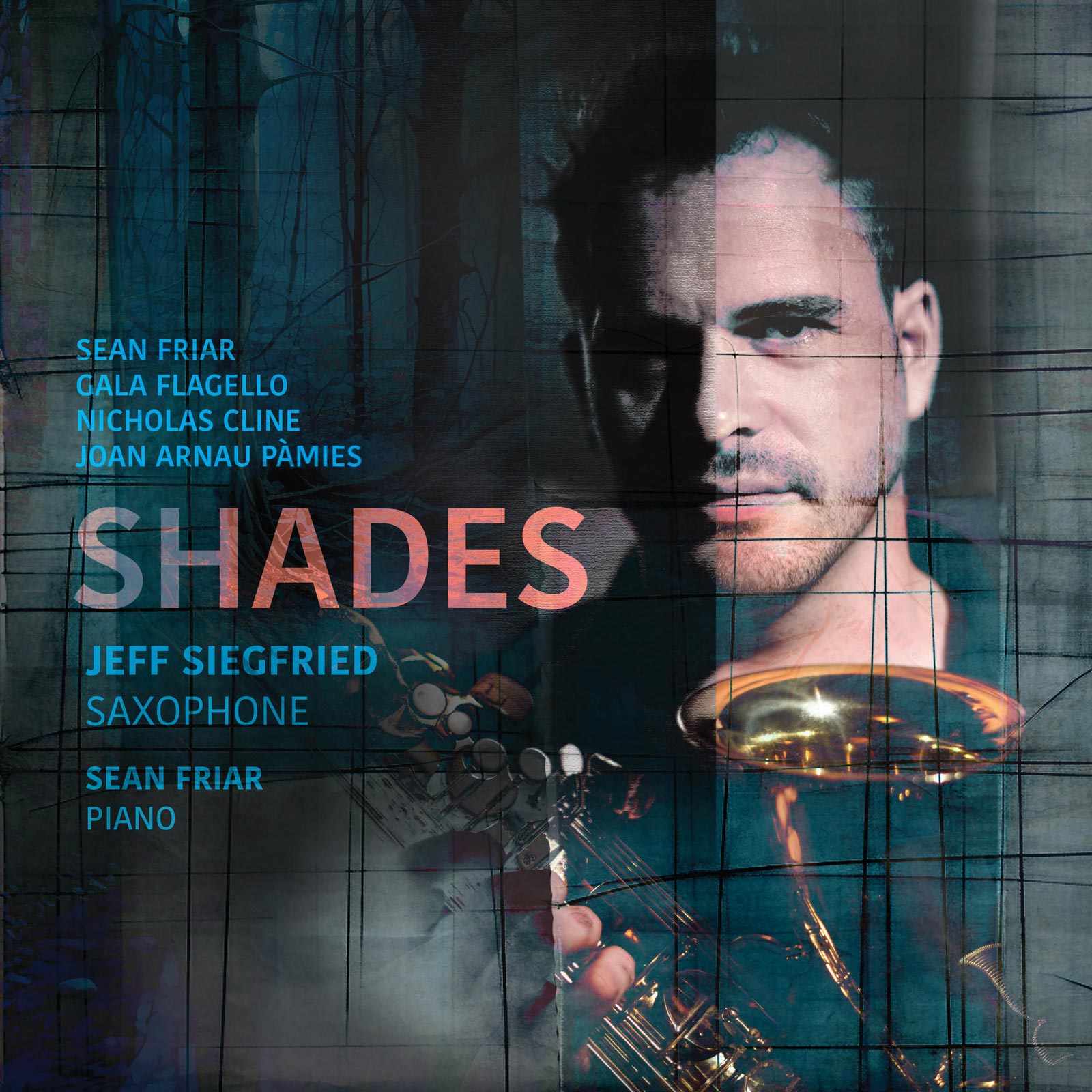Shades
Sean Friar composer
Joan Arnau Pàmies composer
Nicholas Cline composer
Gala Flagello composer
Jeff Siegfried saxophone
Sean Friar piano
Saxophonist Jeffrey Siegfried explores new possibilities for his instrument’s dynamic and versatile voice on SHADES from Ravello Records. The title work, Shades, composed by Sean Friar, is a dark and capricious piece, pairing bursts of musical complexity with unsettling stillness. The album also includes Candlewood by Gala Flagello, water-witching by Nicholas Cline, and Λήθη – επιβεβαίωση – ἀλήθεια [Homage to C.P.] by Joan Arnau Pàmies, all of which were composed specifically for Siegfried. The works are inspired by the natural and supernatural worlds; Siegfried aims to express the ineffable through saxophone techniques like multiphonics, which require careful control of the embouchure, fingering, and air-pressure. The resulting music is hauntingly beautiful and deeply compelling.
Listen
Stream/Buy
Choose your platform
Track Listing & Credits
| # | Title | Composer | Performer | |
|---|---|---|---|---|
| 01 | Shades | Sean Friar | Jeff Siegfried, saxophone; Sean Friar, piano | 11:27 |
| 02 | Λήθη - επιβεβαίωση - ἀλήθεια [Homage to C.P.]: I. “Parker-truth” | Joan Arnau Pàmies | Jeff Siegfried, saxophone | 0:17 |
| 03 | Λήθη - επιβεβαίωση - ἀλήθεια [Homage to C.P.]: II. Lethe I | Joan Arnau Pàmies | Jeff Siegfried, saxophone | 5:05 |
| 04 | Λήθη - επιβεβαίωση - ἀλήθεια [Homage to C.P.]: III. “Colored emptiness” | Joan Arnau Pàmies | Jeff Siegfried, saxophone | 2:44 |
| 05 | Λήθη - επιβεβαίωση - ἀλήθεια [Homage to C.P.]: IV. Ovum | Joan Arnau Pàmies | Jeff Siegfried, saxophone | 0:44 |
| 06 | Λήθη - επιβεβαίωση - ἀλήθεια [Homage to C.P.]: V. “Souls for whom a second body is in store” | Joan Arnau Pàmies | Jeff Siegfried, saxophone | 1:10 |
| 07 | Λήθη - επιβεβαίωση - ἀλήθεια [Homage to C.P.]: VI. Lethe II | Joan Arnau Pàmies | Jeff Siegfried, saxophone | 1:57 |
| 08 | Λήθη - επιβεβαίωση - ἀλήθεια [Homage to C.P.]: VII. “Bow anchors out, the sterns rest on the beach.” | Joan Arnau Pàmies | Jeff Siegfried, saxophone | 3:48 |
| 09 | water-witching | Nicholas Cline | Jeff Siegfried, saxophone | 13:05 |
| 10 | Candlewood | Gala Flagello | Jeff Siegfried, saxophone; Sean Friar, piano | 8:16 |
Tracks 1, 10
Recorded July 21, 2021, October 9, 2022 at Newman Center for the Performing Arts, Hamilton Hall in Denver CO
Tracks 2-9
Recorded October 16, 2021, October 6, 2022 at Newman Center for the Performing Arts, Recording Studio, in Denver CO
Recording Session Producer & Engineer, Mixing, Mastering Michael Schulze
Photography Nick Zoulek nickzoulek.com
Executive Producer Bob Lord
A&R Director Brandon MacNeil
A&R Danielle Sullivan
VP of Production Jan Košulič
Audio Director Lucas Paquette
VP, Design & Marketing Brett Picknell
Art Director Ryan Harrison
Design Edward A. Fleming
Publicity Kacie Brown
Digital Marketing Manager Brett Iannucci
Artist Information

Jeff Siegfried
Jeff Siegfried is an artist who takes joy in the wild diversity of the saxophone’s flexible voice. From classical to jazz to klezmer to free improvisation, there are few styles or settings where he doesn’t feel comfortable. He combines a “rich, vibrant tone” (South Florida Classical Review) with “beautiful and delicate playing” (Michael Tilson Thomas) to deliver “showstopper performances” (Peninsula Reviews).
Sean Friar
Composer and pianist Sean Friar grew up in Los Angeles, where his first musical experiences were in rock and blues piano improvisation. His music keeps in touch with the energy and communicative directness of those musical roots, now along with an expansive classical sensibility that is “refreshingly new and solidly mature… and doesn’t take on airs, but instead takes joy in the process of discovery [and] in the continual experience of suspense and surprise that good classical music has always championed.” (Slate Magazine).
Joan Arnau Pàmies
Joan Arnau Pàmies is a composer, a multi-instrumentalist, and a performing artist. His music has been described as “beautiful in the Aristotelian sense of proportion and harmony” (Revista Musical Catalana) and “chaotic and elemental yet discernibly balanced” (The New York Times).
Born in Catalonia, Pàmies was introduced to music at a very early age. At home, his father, a professor of Catalan literature, would often play records by Miles Davis, Lester Young, the Academy of St Martin in the Fields, and Glenn Gould. At age three, his mother, a public school teacher, gave him a toy saxophone as a birthday gift. A few years later, Pàmies started learning the piano at a local music school.
Nicholas Cline
Nicholas Cline makes music for voices, acoustic instruments, and by electroacoustic means. Deeply influenced by the natural world, Cline’s music draws on a broad range of subjects and experiences with the belief that music reveals, challenges, and shapes the listener’s understanding of the world. Recent projects include collaborating with the The Crossing for a performance and recording of his work, Watersheds, for 24 voices, tenor saxophone, and live electronics.
Gala Flagello
Gala Flagello is a composer, educator, and nonprofit director whose music has been described as “both flesh and spirit, intensely psychological without sacrificing concrete musical enjoyment” (I Care If You Listen). She is the Festival Director and co-founder of the nonprofit contemporary music festival Connecticut Summerfest.

